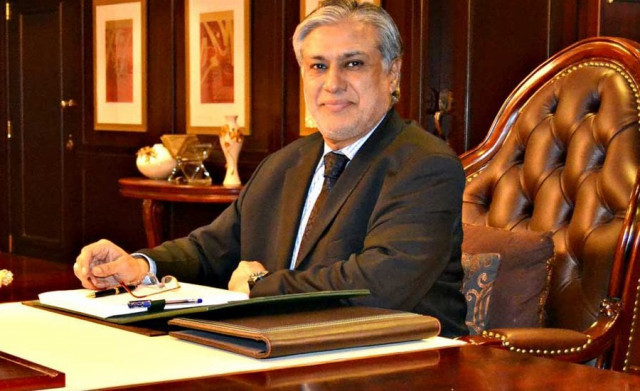Dar’s legacy: a heavily-indebted Pakistan
External debt soars to $83 billion as $8.2 billion spent on its servicing

PHOTO: WIKIPEDIA
While some quarters still insist that Ishaq Dar’s performance as finance minister during the last four years is up to the mark, the ground reality is quite the opposite.
The shocking elements were that the country’s total external debt and liabilities increased to roughly $83 billion by end of fiscal year 2016-17 and a sum of $8.2 billion was spent on its servicing.
In terms of the total size of the economy, the country’s debt and liabilities increased to 78.7% of the gross domestic product (GDP), which is way above the safe level for a developing country like Pakistan, according to the data released by the State Bank of Pakistan on Thursday.
Finance czar: Double whammy for Ishaq Dar
Every Pakistani now owes Rs120,381 as against roughly Rs91,000 in 2013, which reflects an increase of 32% over more than four years.
By all means, Pakistan’s total debt and liabilities have crossed the dangerous mark, suggesting the country has fallen into a debt trap. The growth in total debt and liabilities was 11% last year – the second consecutive year when the country saw a double-digit growth.
“Things are not bad as we thought, they have actually gone worse,” said Asad Umar, member of the National Assembly from the Pakistan Tehreek-e-Insaf (PTI).
As against the Rs22.57 trillion of FY 2015-16, Pakistan’s total debt and liabilities increased to Rs25.1 trillion by June 30 of this year, showing an 11% growth over the previous year, said the SBP.
The total debt includes the obligations of both the government and the private sector, although the private sector debt is minimal as compared to that of the government.
Finance czar may be on his way out
Excluding liabilities, the total debt grew to Rs24 trillion by the end of last fiscal year – a whopping 75.3% of GDP and a net increase of Rs2.43 trillion from the previous financial year.
Out of Rs25.1 trillion, the gross public debt, which is the responsibility of the government directly or indirectly, was Rs21.4 trillion, according to the SBP data. The gross public debt increased by Rs1.732 trillion or 8.8% in the last fiscal year.
In order to conceal the worsening debt picture, the federal government twice revised the definition of public debt. According to the finance ministry’s definition, the public debt was Rs19.64 trillion, but the PTI has already decided to challenge the amended definition in the Supreme Court.
The gross public debt of Rs21.4 trillion was equal to 67.2% of GDP, which was in violation of the original limit set under the Fiscal Responsibility and Debt Limitation Act, passed by parliament in 2005.
External debt
The external debt grew to Rs8.33 trillion. There was an addition of Rs960.3 billion in a single year on the back of 13% growth, according to the central bank. The government claims its external debt is Rs5.9 trillion, although it raises serious questions over the government’s definition of debt calculation.
In terms of the US dollar, the total external debt and liabilities have increased to $82.981 billion – a net addition of $9.1 billion in a single year. The increase in external debt is more than the International Monetary Fund (IMF) estimates that had put the figure at $79.1 billion in its last report.
Pakistan is now sitting on explosive mines, as the day it would let the rupee gain its actual value against the US dollar, the country’s external debt would phenomenally grow. The country spent $8.2 billion on repayment of external debt and interest on it during the last fiscal year, according to the SBP. The external debt servicing increased by another $2.8 billion or a whopping 53.4%.
Proposal to allow rupee depreciation opposed by Dar
The public external debt servicing stood at $6.5 billion – higher by $2.1 billion or 47.4%. The principal loans repayment by the public sector stood at $5.2 billion – up by 59.5% in a single year, thanks to reckless borrowings by the finance ministry.
The external debt as percentage of last year’s exports was alarmingly 382% – many times more than the safe limit of 175%.
Domestic debt
The government’s domestic debt also swelled to Rs14.9 trillion – higher by Rs1.24 trillion or 9% over the previous year’s level. The debt of public-sector enterprises grew at an alarming pace of 44.7% and was registered at Rs822.8 billion.
Pakistan has been borrowing heavily to meet budget demands as it remains unable to broaden its extremely narrow tax base. The government, however, instead of improving its affairs got the definition of public debt changed.
During the past three years, the PML-N government has been subject to severe criticism for acquiring expensive foreign debts, increasing the debt mountain.



















COMMENTS
Comments are moderated and generally will be posted if they are on-topic and not abusive.
For more information, please see our Comments FAQ